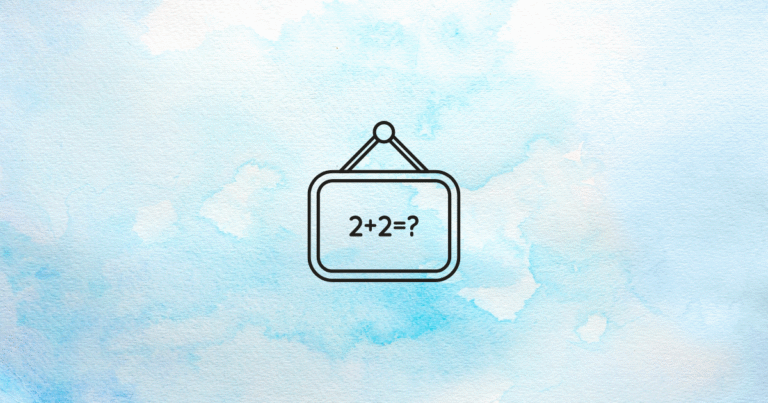Ever notice how some drivers seem to speed up right after buckling their seatbelt? Or how people walking on a freshly salted sidewalk sometimes take bigger, more careless steps than they would on obviously icy pavement? You’re witnessing a fascinating psychological phenomenon that’s quietly sabotaging ecommerce stores everywhere. It’s called the Peltzman Effect, and if you’re running an online business, it might be costing you more conversions than you realize.
Here’s what happened to Sarah, who runs a jewelry store: She added every trust badge imaginable to her checkout page—SSL certificates, money-back guarantees, secure payment icons, customer reviews, return policies. She thought more safety signals meant more sales. Instead, her conversion rate dropped 15%. Customers started questioning why she needed so many reassurances. Were they trying too hard? What were they hiding? The very safety features designed to increase trust actually made people more suspicious.
What Is the Peltzman Effect?
The Peltzman Effect, named after economist Sam Peltzman, describes how people often increase their risky behavior when safety measures are put in place. When we feel more protected, we unconsciously take bigger risks. Peltzman first documented this when studying automotive safety regulations in the 1970s. He found that while mandatory seatbelts reduced deaths per accident, they didn’t reduce overall traffic fatalities as much as expected because some drivers drove more aggressively, feeling safer.
In ecommerce, this translates to something equally counterintuitive: the more safety features you add to your store, the more likely customers are to engage in behaviors that actually hurt your business. They might become more demanding, more likely to return items, more suspicious of your motives, or more hesitant to convert because they’re overthinking the “risk” that your safety measures are supposedly protecting them from.
Think about it this way: if someone hands you a helmet before you walk into a room, your first thought isn’t “how thoughtful”—it’s “what’s going to fall on my head?” This psychological response is hardwired into human behavior, and it’s affecting your customers’ shopping decisions in ways you probably haven’t considered.
The Psychology Behind Risk Compensation
To understand why the Peltzman Effect happens, we need to dig into how our brains process risk and safety. Humans have a built-in “risk thermostat” that tries to maintain what psychologists call our preferred level of risk. When external safety measures lower the apparent risk, our internal systems compensate by accepting higher risks elsewhere.
The Risk Homeostasis Theory
Psychologist Gerald Wilde’s Risk Homeostasis Theory explains that each person has a target level of risk they’re comfortable with. When you artificially lower risk in one area, people unconsciously increase it in another to maintain their comfort zone. In ecommerce, this might mean that a customer who feels ultra-safe due to your generous return policy becomes more likely to make impulse purchases they’ll later regret—and return.
Consider Emma, who shops at an online clothing retailer with a “365-day return policy, no questions asked.” She orders five dresses for a wedding, knowing she’ll return four. Without that safety net, she would have been more careful with her selection, probably reading reviews more thoroughly and choosing just one or two dresses. The safety feature actually encouraged wasteful behavior that increased the retailer’s costs and processing time.
Cognitive Dissonance and Safety Signals
When customers see excessive safety messaging, their brains start to wonder: “Why are they working so hard to convince me this is safe? What danger am I not seeing?” This creates cognitive dissonance—the uncomfortable feeling when our expectations don’t match reality. If shopping should be naturally safe and easy, why all the reassurance?
I’ve seen stores with checkout pages that look like security fortresses: “256-bit SSL encryption,” “Verified by Visa,” “Norton Secured,” “100% Safe Shopping Guarantee,” “Your Privacy Protected,” “Secure Checkout,” and “Money-Back Promise” all crammed above the buy button. Instead of feeling safer, customers start asking questions they wouldn’t have otherwise: “Is my credit card information really at risk? Why do they need all these protections if it’s just a normal purchase?”
How the Peltzman Effect Shows Up in Ecommerce
The Peltzman Effect manifests in several sneaky ways across ecommerce that can actually hurt your conversion rates and customer lifetime value. Let’s explore the most common scenarios you’re likely encountering right now.
The Over-Protection Paradox
When businesses layer on too many trust signals, they create what I call the “methinks thou dost protest too much” effect. Customers start wondering why you need so many guarantees. A clean, professional site with one or two key trust indicators often converts better than a fortress of badges and promises.
Take the difference between Apple’s checkout and a typical electronics retailer. Apple’s checkout is remarkably sparse—just the essentials, with trust implied through brand recognition and clean design. Compare this to electronics sites that plaster “Authorized Dealer,” “Price Match Guarantee,” “Extended Warranty Available,” “Secure Shopping,” and “Satisfaction Guaranteed” everywhere. Guess which one feels more trustworthy?
The Free Returns Trap
Generous return policies can actually increase return rates beyond what’s mathematically logical. When customers know returns are easy and free, they engage in “bracketing”—ordering multiple sizes, colors, or styles with the intention of returning most items. This behavior wouldn’t occur without the safety net, and it significantly impacts your bottom line through increased processing costs, inventory turnover, and potential inventory damage.
Zappos famously offers a 365-day return policy, but they’ve built their entire business model around this, with efficient return processing and the expectation that many customers will keep items they initially planned to return. However, smaller retailers who copy this strategy without the supporting infrastructure often find themselves drowning in return costs.
Discount Conditioning and Risk Tolerance
Here’s where the Peltzman Effect gets really interesting for discount strategies. When customers know they can always find a discount code, they become more willing to abandon their carts and wait for a better deal. The “safety” of knowing discounts are available actually increases the “risk” they’ll take with potentially missing out on an item, because they’re betting on future savings.
This creates what behavioral economists call “search cost inflation”—customers spend more time and energy looking for discounts than the discounts are actually worth. A customer might abandon a $50 purchase to search for a 10% off code, spending 20 minutes to save $5. That’s a terrible hourly wage, but the psychological safety of “never paying full price” drives the behavior.
The Trust Signal Paradox
The most counterintuitive aspect of the Peltzman Effect in ecommerce is how trust signals can backfire. The goal isn’t to eliminate trust signals—it’s to use them strategically so they enhance rather than undermine confidence.
Quality Over Quantity in Trust Building
Research from the Baymard Institute shows that customers notice and respond positively to 1-3 key trust signals, but their effectiveness diminishes rapidly after that. In fact, pages with more than 5 trust indicators often perform worse than those with 2-3 well-chosen ones.
The psychology here is fascinating: when we see one or two trust signals, we think “good, this is secure.” When we see five or more, we think “why do they need so many? What’s wrong with this site?” Our pattern-matching brains interpret excessive reassurance as a warning sign.
Growth Suite’s behavioral tracking reveals this pattern in action. Stores that streamlined their trust signals often see improved engagement metrics—customers spend less time hesitating and more time moving through the purchase funnel. The session recordings show customers scrolling past excessive trust badges but engaging positively with clean, confident presentations.
Context-Appropriate Safety Measures
The key is matching your safety measures to the actual concerns customers have at each stage of their journey. A first-time visitor browsing your homepage doesn’t need to see “Secure Checkout”—they’re not checking out yet. But someone on your checkout page absolutely should see payment security indicators.
This is where behavioral segmentation becomes crucial. High-intent visitors who’ve added items to their cart and started checkout are looking for different reassurances than casual browsers. High-intent customers want to know their payment is secure and the company is legitimate. Low-intent browsers want to know the products are quality and the brand is authentic.
When “Safe” Shopping Creates Risky Business Decisions
The most dangerous manifestation of the Peltzman Effect is when safety features encourage genuinely problematic customer behaviors that hurt your business sustainability.
The Subscription Safety Net Problem
Subscription services that promote “cancel anytime” often see higher churn rates than those with modest cancellation friction. When cancellation is too easy, customers treat subscriptions like impulse purchases, signing up casually because they know they can easily leave. This creates a revolving door of customers who never develop loyalty or habit formation.
Compare Netflix’s cancellation process (which requires several confirmation clicks) to services that allow one-click cancellation. Netflix understands that a small amount of friction actually protects customers from impulsive decisions they might regret, while still respecting their ultimate choice to leave.
The Price Match Guarantee Spiral
Price matching policies intended to build confidence often create customers who become obsessively focused on finding lower prices elsewhere. Instead of making customers feel secure about paying your price, these policies train them to shop around more aggressively. They know they’re “protected” by your price matching, so they take bigger risks in terms of time investment hunting for deals.
This behavior is particularly pronounced in electronics and appliances, where customers will spend hours comparing prices for marginal savings, secure in the knowledge that they can always come back and demand a price match. The policy that was meant to speed up purchase decisions actually slows them down.
Balancing Safety and Psychology for Better Conversions
Understanding the Peltzman Effect doesn’t mean abandoning safety features—it means using them more intelligently. The goal is to create genuine confidence without triggering the psychological defense mechanisms that make customers overthink their purchases.
The Confidence-Without-Compensation Approach
Effective ecommerce psychology creates confidence through competence signals rather than protection promises. Instead of saying “100% Safe Shopping Guarantee,” show professional product photos, detailed specifications, and authentic customer reviews. Instead of “No-Risk Purchase,” display your business address, phone number, and response time for customer service.
Customers interpret competence signals as evidence of trustworthiness without triggering the “what are they protecting me from?” response. A well-designed product page with comprehensive information creates confidence naturally, while excessive safety messaging creates questions where none existed before.
Strategic Friction and Optimal Challenge
Some friction in the buying process is actually beneficial because it prevents the Peltzman Effect from encouraging problematic behaviors. Strategic friction might include:
- Email confirmation for high-value purchases: This brief pause allows customers to confirm they really want the item, reducing buyer’s remorse and returns
- Account creation for returns: A simple step that reduces casual bracketing behavior while still allowing legitimate returns
- Size guides instead of “free exchanges”: Helping customers choose correctly upfront rather than encouraging them to order multiple sizes
- Clear shipping timelines: Setting proper expectations rather than promising unrealistic speed that creates future problems
Behavioral Segmentation for Safety Messaging
Growth Suite’s behavioral tracking allows you to see exactly which customers need reassurance and which are already confident. New visitors might benefit from seeing one key trust signal, while returning customers are ready to buy and don’t need additional convincing. High-intent visitors who’ve spent significant time on product pages are past the trust-building stage and ready for streamlined checkout.
The data often reveals that your most valuable customers—those who purchase repeatedly and rarely return items—respond best to minimal safety messaging and clean, confident presentation. It’s the hesitant, low-intent visitors who seem to want more reassurance, but paradoxically, over-reassuring them triggers even more hesitation.
Practical Implementation: The Smart Safety Strategy
Now that you understand how the Peltzman Effect can sabotage your conversion efforts, here’s how to implement a smarter approach to safety and trust building that enhances rather than undermines customer confidence.
The Trust Signal Audit
Step 1: Inventory your current safety messaging. Walk through your site as a new customer and note every trust badge, guarantee, security notice, and safety promise you encounter. Most store owners are shocked to discover how many they’ve accumulated over time.
Step 2: Categorize by necessity. Divide your trust signals into three categories: essential (required by law or payment processors), valuable (genuinely reassuring for most customers), and excessive (potentially triggering suspicion). Common essential signals include SSL certificates and payment security indicators. Valuable signals might include return policies and contact information. Excessive signals are often redundant security badges or over-the-top guarantees.
Step 3: Test strategic removal. Start by removing obvious excess and testing the impact. Many stores see immediate conversion improvements when they clean up cluttered checkout pages and over-promised product descriptions.
Context-Appropriate Reassurance
Implement trust signals only where they address specific customer concerns at that moment in the journey:
- Homepage: Focus on brand credibility (customer count, years in business, major client logos)
- Product pages: Emphasize product quality (detailed specs, customer photos, authentic reviews)
- Cart page: Address purchase logistics (shipping options, delivery timeframes)
- Checkout page: Confirm transaction security (payment badges, SSL indicators)
Growth Suite’s session recordings help you identify exactly where customers hesitate, allowing you to place the right reassurance at the right moment rather than blasting safety messages everywhere.
The Confidence-Building Alternative
Replace protection-focused messaging with competence-focused messaging:
| Instead of This (Protection) | Try This (Competence) |
|---|---|
| “100% Safe Shopping Guarantee” | “Trusted by 50,000+ customers since 2018” |
| “Your Privacy is Protected” | Clear, accessible privacy policy link |
| “Risk-Free Purchase” | “Questions? Call us at (555) 123-4567” |
| “Satisfaction Guaranteed or Your Money Back” | “See what customers are saying” + genuine reviews |
How Growth Suite Helps You Master the Peltzman Effect
Understanding the psychological principles behind the Peltzman Effect is one thing—implementing and optimizing them is another challenge entirely. This is where Growth Suite becomes your strategic advantage in creating the perfect balance between confidence and conversion.
Growth Suite’s behavioral tracking reveals exactly how customers respond to your trust signals, showing you which ones genuinely increase confidence and which ones trigger the overthinking that kills conversions. The session recordings capture the real-time decision-making process, letting you see when customers pause to read multiple trust badges (a red flag) versus when they move smoothly through your funnel (a green light).
But here’s where Growth Suite really shines: its purchase intent prediction helps you identify which customers need reassurance and which are already confident. Instead of blasting safety messages at everyone, you can strategically present trust signals only to visitors who are genuinely hesitant, while offering clean, streamlined experiences to high-intent shoppers who are ready to buy.
The platform’s dynamic personalization means that a nervous first-time visitor might see key trust indicators, while a returning customer who’s clearly ready to purchase gets a friction-free checkout experience. You’re not just avoiding the Peltzman Effect—you’re actively optimizing for each customer’s psychological state and purchase intent.
Growth Suite’s detailed analytics show you the real impact of trust signal optimization, tracking not just conversion rates but also return rates, customer lifetime value, and purchase behavior patterns. You’ll see how reducing excessive safety messaging often leads to customers who are more confident in their purchases, leading to fewer returns and higher satisfaction.
Ready to stop letting the Peltzman Effect sabotage your conversions? Start your free 14-day Growth Suite trial and discover how behavioral intelligence can help you build genuine confidence without triggering psychological resistance. Your customers will thank you with higher conversion rates and more confident purchases.




